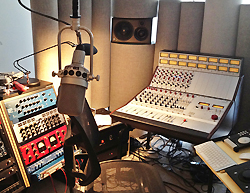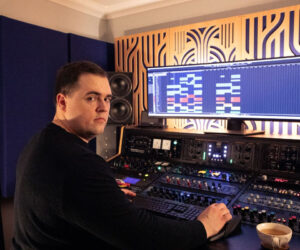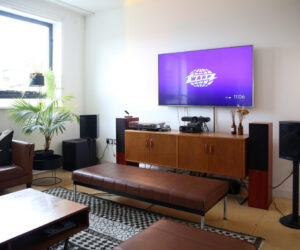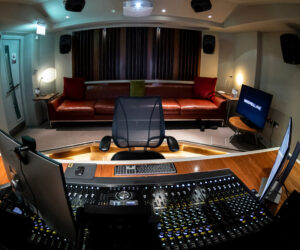Engineer and musician Michael Cohen recently took delivery of the first 8-channel Rupert Neve Designs 5088 analog mixing console at his Sarasota, FL studio in July with help from veteran studio outfitters Sonic Circus.
Cohen selected the high-voltage, discrete 5088 system to provide fidelity for the jazz, acoustic and singer-songwriter recordings in which he specializes, after becoming frustrated with the performance of DAWs as well as other analog mixers.
The 5088 is customized with two stereo inputs, six mono inputs, two stereo groups, a master section and ten 5051 Inductor EQ/Compressor modules.
“It just sounds incredible,” he says. “It’s easily the best sounding desk I’ve heard. It can deliver the character of classic desks, especially with the inductor EQs, but it still has a very modern sound. It also has practically no noise, and the level of detail is astonishing.”
In Cohen’s first recordings with the 5088, the new 5051 modules have provided both versatility and tone, he reports. “I’ve been finding that I don’t need to use my outboard gear any more, as the EQ and compressors on the 5051’s are really outstanding. On my alto saxophone, using a Neumann M49, I’ve been adding a touch of EQ at 200 and 400 Hz with the HPF set to 60 Hz and a little bit of high shelf at 16 kHz.
“The EQ really focuses the sound of the sax, and adds a sense of life and dimension to the mix. To add a little dynamic control, I have the compressor set to feed-forward mode with a 2:1 ratio, and gain reduction peaking from about 1 to 3 dB. The compressor sounds incredibly natural, and my saxophone has never sounded better.”
The new 5051 Inductor EQ/Compressor module combines a classic style three-band EQ based on Rupert’s vintage designs with the power and flexibility of the Portico Series compressor.
With a fully class A signal path, dual line inputs and high performance transformers, the 5051 delivers exceptional tonal and dynamic control to each channel of a 5088 system.
In Cohen’s studio, the 5088 acts as the centerpiece for two tracking rooms featuring Avid Pro Tools, a Euphonix controller, two Bricasti reverbs, select outboard equipment and ATC 25a monitors. With a focus on sonic purity instead of elaborate, high track count productions, the small frame 5088 has taken the studio’s performance to another level.
“Everything I’ve been doing was instantly improved by the 5088. It’s been a complete delight so far, and I’m only just starting to realize what it can do,” says Cohen.
The 8-channel 5088 is a new frame option built around the same high-voltage, class A and discrete topologies for which the 5088 is renowned.
The new frame features eight mono or stereo input modules, two stereo group/aux master/FXreturn modules, and a standard 5088 master section. A penthouse frame can also be added to fit up to 16 half-rack RND modules, or an optional 4RU rack adapter.




















